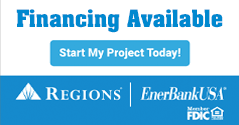Is your chimney safe?
If you have a new home with a fireplace, or if you haven’t burned a fire in your fireplace for some time, you might have concerns about whether or not your chimney is safe to use. It’s wise to be cautious; an unsafe chimney could cause a damaging and dangerous house fire. So how can you tell if your chimney is safe?

Schedule an inspection
The best way to tell if your chimney is safe to use is to have it swept and inspected by a chimney sweep who has been certified through the Chimney Safety Institute of America. A chimney sweep will clear your chimney of dangerous and flammable creosote, as well as of any obstructions, such as animal nests, trapped animals, and leaves and twigs. Your chimney sweep also will perform an inspection of your chimney to look for signs of damage or structural problems that could render your chimney unsafe. Chimney sweepings and inspections are so important to the safety of your chimney that the National Fire Protection Association recommends that all chimneys are swept and inspected at least once a year and when a home with a fireplace is purchased.
Check your chimney
While there are many chimney problems that only a certified chimney sweep will be able to detect, there are some visible signs that your chimney isn’t safe and needs to be repaired before you burn a fire. Those signs include:
- Cracked or spalling bricks, or crumbling mortar. If you see visible signs of damage to your chimney’s masonry, it should be inspected and repaired by a chimney professional. A chimney with failing masonry could be structurally unsound and could fail to contain the heat, sparks and noxious gases from your fireplace.
- Leaning chimney structure. If your chimney appears to be leaning or tilting, that is a clear sign that there are structural problems.
- Crumbling flue tiles. Most masonry chimneys are lined with clay flue tiles that can crack or crumble with age. If you find chunks of tiles in your firebox, you may need to repair or reline your chimney flue.
- Rusted or stuck damper. Dampers are made from metal that can warp or stick over time. Your damper helps block drafts when your chimney isn’t in use. A damper that isn’t opening and closing properly can prevent your fireplace from drafting safely and correctly. You should be able to visually inspect your damper by peering into the fireplace and up the flue.
- Missing or displaced chimney cap. If your chimney cap isn’t securely attached to the top of your fireplace, or if it’s missing entirely, your chimney is at risk of water damage, and your roof could be susceptible to a fire from sparks escaping your chimney.
- Discolored or sagging ceilings, wallboard or wallpaper. If you see water stains, discoloration or sagging on the wall and ceiling around your chimney, that a clear sign that water is making its way in through the chimney. If water is making its way in, your chimney structure is in jeopardy.
If you’re concerned about the safety of your chimney, call to schedule an appointment with Chimney Saver Solutions today. One of our sweeps will be able to verify that your chimney is safe or recommend repairs to make it safe.






